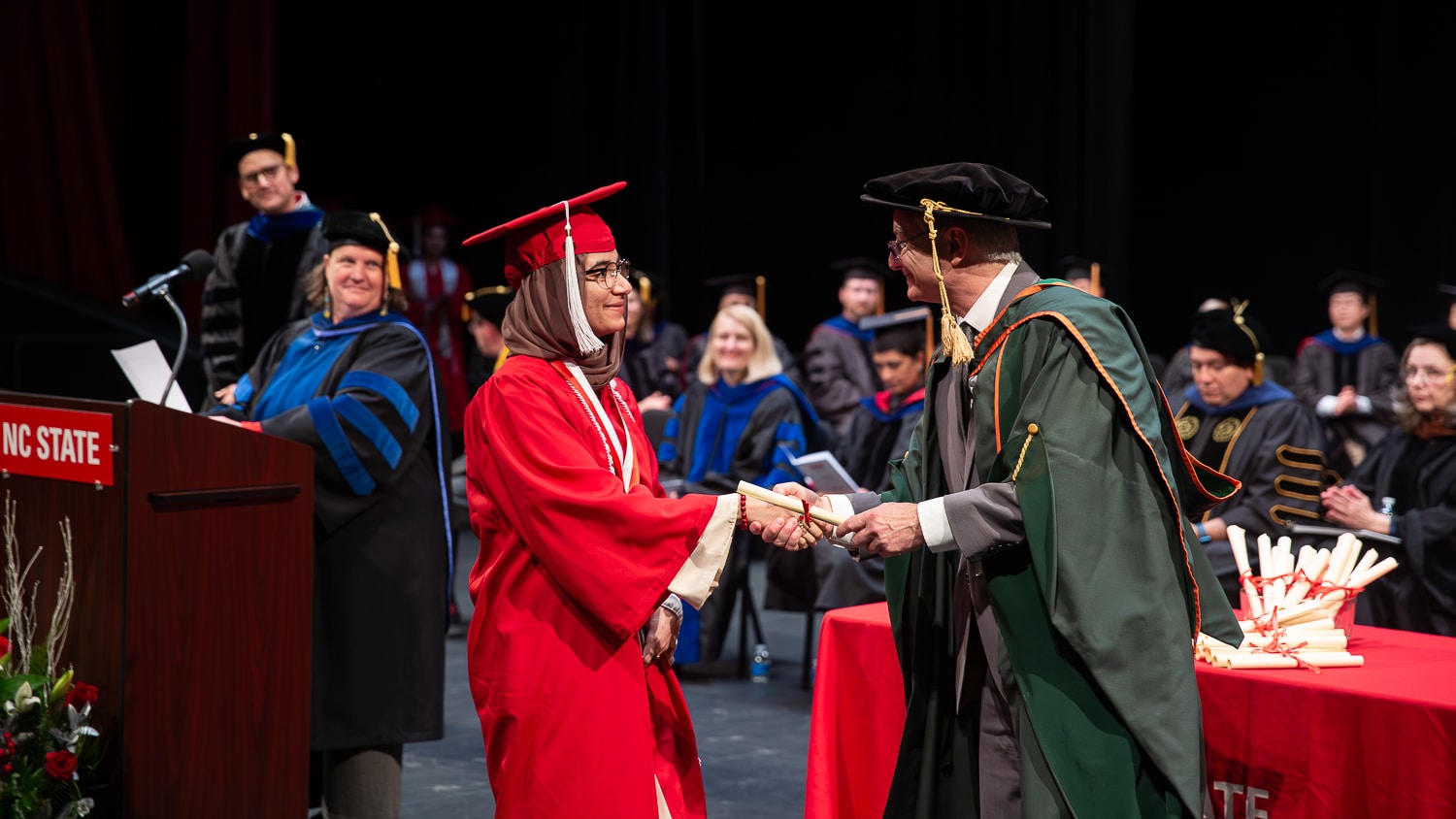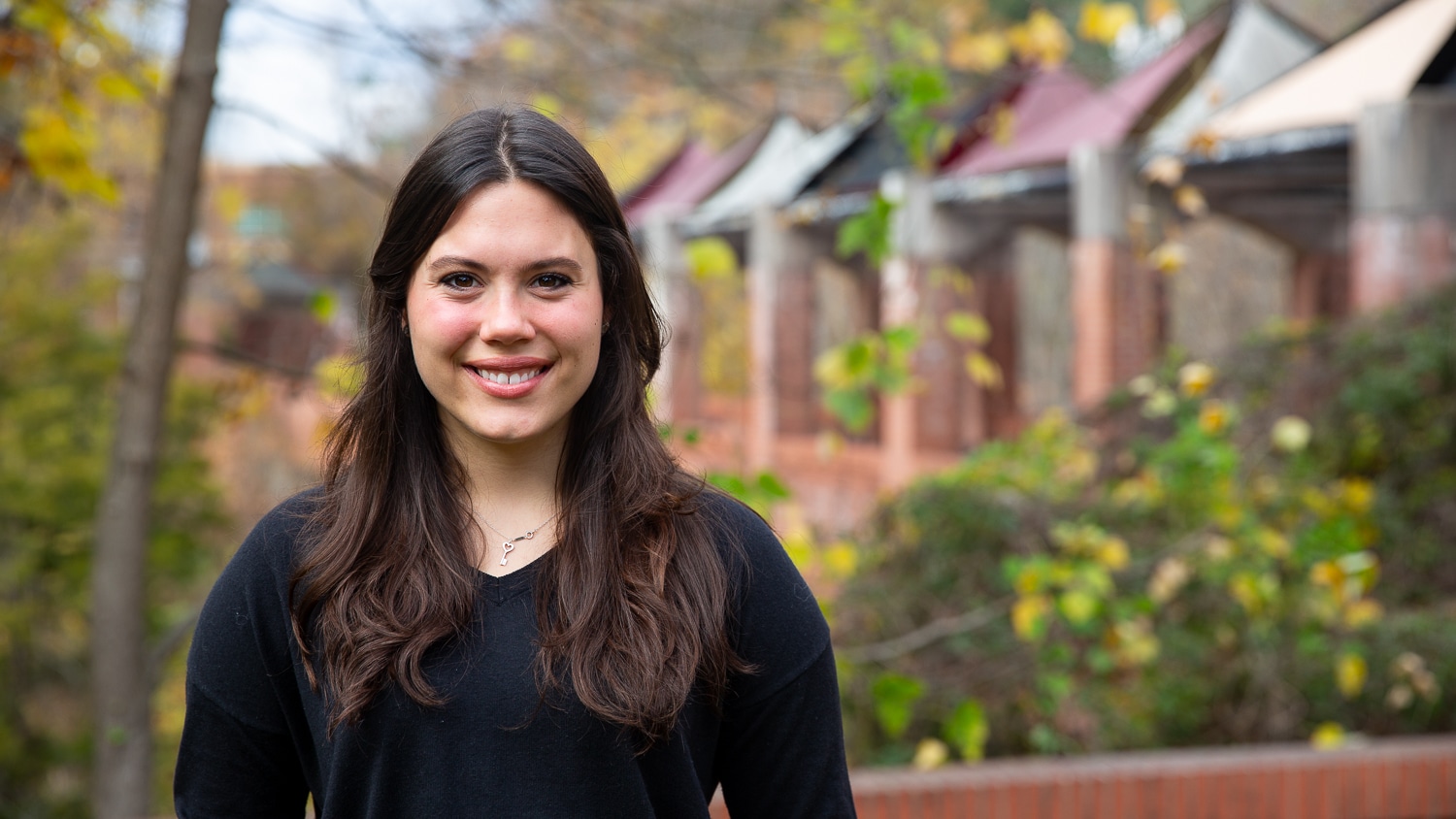By Mary Giuffrida
“This is something that I’ve always wanted to do.”
This sentiment shared by student designer Bhavani Jayaraman is one unanimously echoed by her Threads classmates. For the designers, Threads: A Student Texploration has been the goal since they first enrolled at the Wilson College of Textiles. It’s a chance to put their creativity and drive to the test.
Exciting challenges
Threads is an elective course available to fashion and textile management (FTM) students in the fashion development and product management (FDPM) concentration, which challenges students to spend an entire semester devoted to the designing, sourcing and building of a complete industry-quality collection.
This year’s nine designers turned their inspiration into a cohesive collection of three to five looks with a focus on ideation, theme development, fit and fabrication — taking their art from inspiration to the runway.

Guiding them through the process was Professor Kate Annnett-Hitchcock.
“Dr. Kate has a very helpful perspective of the expectations and how we can be pushing ourselves,” Senior Makenna Lanier says.
“I’ve always liked being challenged, and Dr. Kate definitely does that,” Senior Reagan Kurtz explains. “I love that because it makes me better in the end.”

Various industry speakers visited the students throughout the semester, bringing new perspectives and offering advice to the designers.
“An alumna who designs for the bridal brand Jenny Yoo came in this semester twice, actually,” Senior Reagan Kurtz says. “Being able to have her expertise on something that I’m super passionate about was awesome.”
Collections prioritize inclusive fashion
This semester the designers goal was designing their collection with inclusivity in mind. Each collection executed this differently.
Senior Dominic Celemen designed his collection to cater to people of all ages. He even used his little brother as a model.

“It’s not something I thought I would have been able to do going into this course but it’s really cool, and I’m excited to see how it turns out,” he says.
Jayaraman used her own experiences as a starting point for her designs, aiming to solve a problem she experiences everyday.
“When I was a first-year student I was diagnosed with type one diabetes, and I started wearing an insulin pump shortly after that,” she says. “I found how difficult it was to wear an insulin pump and wear dresses, so my collection is mainly dresses or full body garments where insulin pump users can wear the dress and use their pump at the same time.”
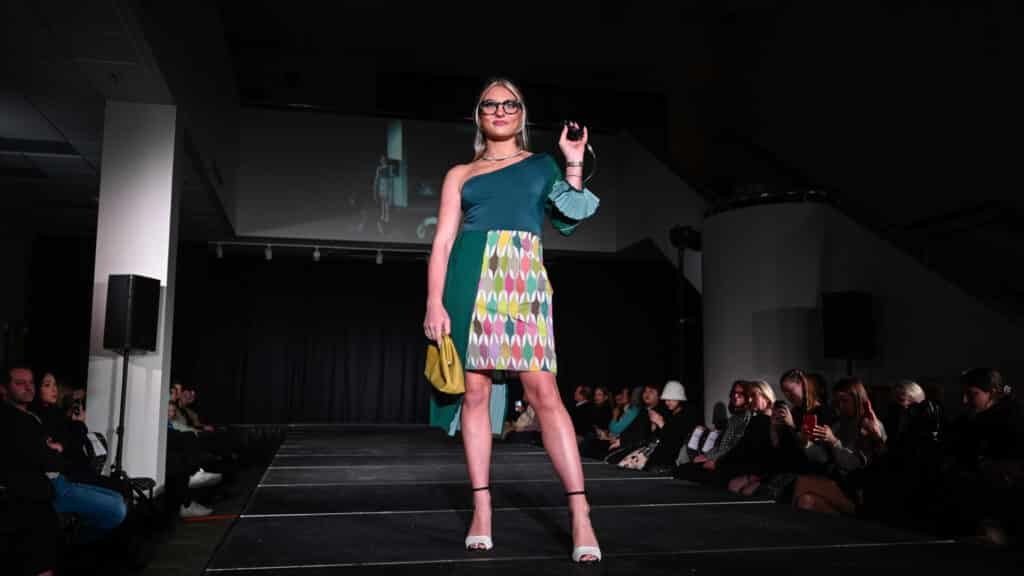
Creativity abounds
With the sky as the limit, the students were able to explore their passions and push the boundaries of their creativity.
Some found their creative vision by looking towards the past.
“My collection is an exploration of imperfection and healing through the lens of men’s workwear,” Celemen says. “I drew a lot of inspiration from century old American workwear from the late 1800s and early 1900s.”
Others looked inward.
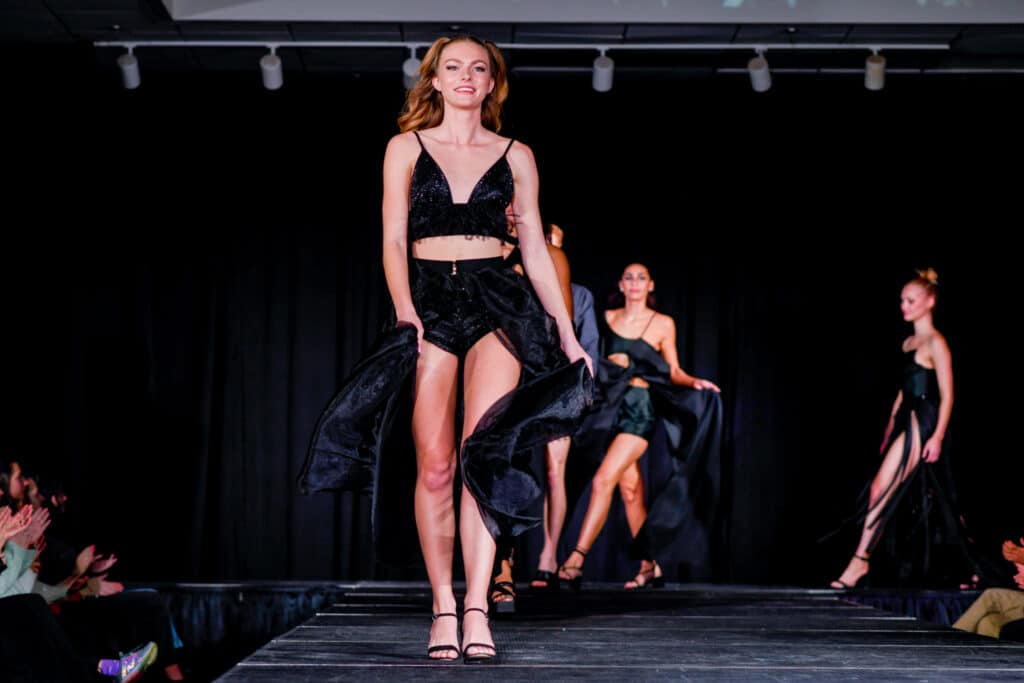
“My collection is called ‘The Exploration of Her,’” Kurtz says. “The concept is women in their 20s trying to find themselves. Each look is inspired by an element of oneself that they aspire to grow in.”
For each of the designers, their collection was an opportunity not only to bring their art and talents to a new stage, but also to push themselves to learn and grow as they prepare to take their education into the industry.
Learning experiences
Almost all the designers gained experience with technology they had never encountered before, using their collection as an opportunity to add a new skill set to their repertoire.
Celemen worked with technicians in the laser lab to replicate sun fading and wear on his fabrics.

“I’d never had an opportunity to use it before, but I thought it’d be perfect to try and emulate these effects and characteristics that are unique to the wearer,” he says. “It takes a lot of sampling and a lot of stages of revisal and approval.”
Kurtz pushed herself to try working with new types of fabric and expanded the range of what she was able to do.
“I didn’t have a lot of experience working with knits and I have found myself using them a lot,” she says. “I’m excited to be able to have that skill in the future.”
The final product
Armed with new skills and expanded confidence, the designers debuted their collections to an excited crowd in the W. Duke Kimbrell Atrium as their final exam.
Their biggest emotions after the show? Relief, pride and confidence.
“Watching the models walk down the runway and hear audience reactions really made all of it worth it,” Lanier says. “This class really taught me that once you get the ball rolling, everything starts falling into place. You just have to let yourself fail before you can learn and grow and succeed.”
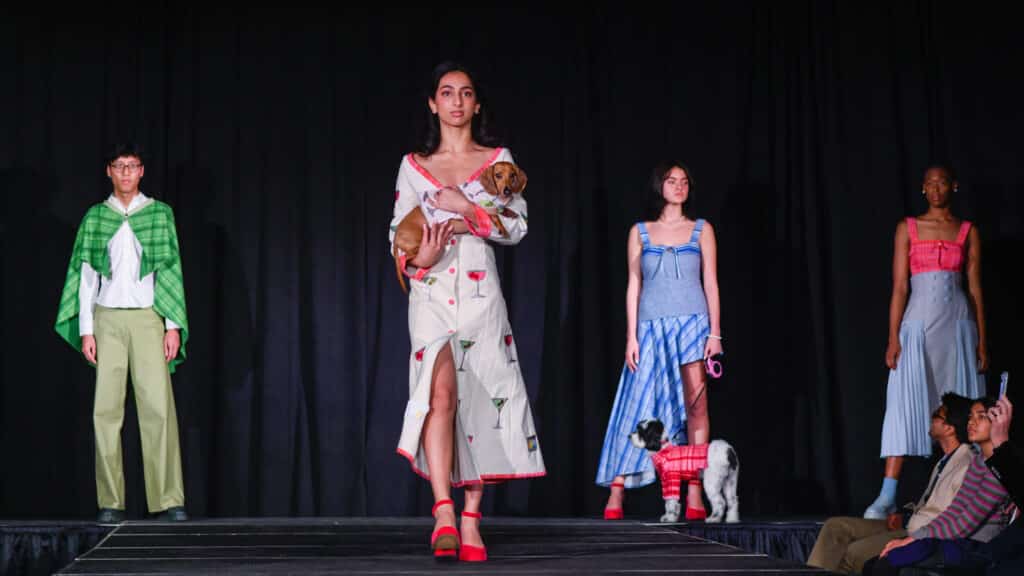
- Categories:


